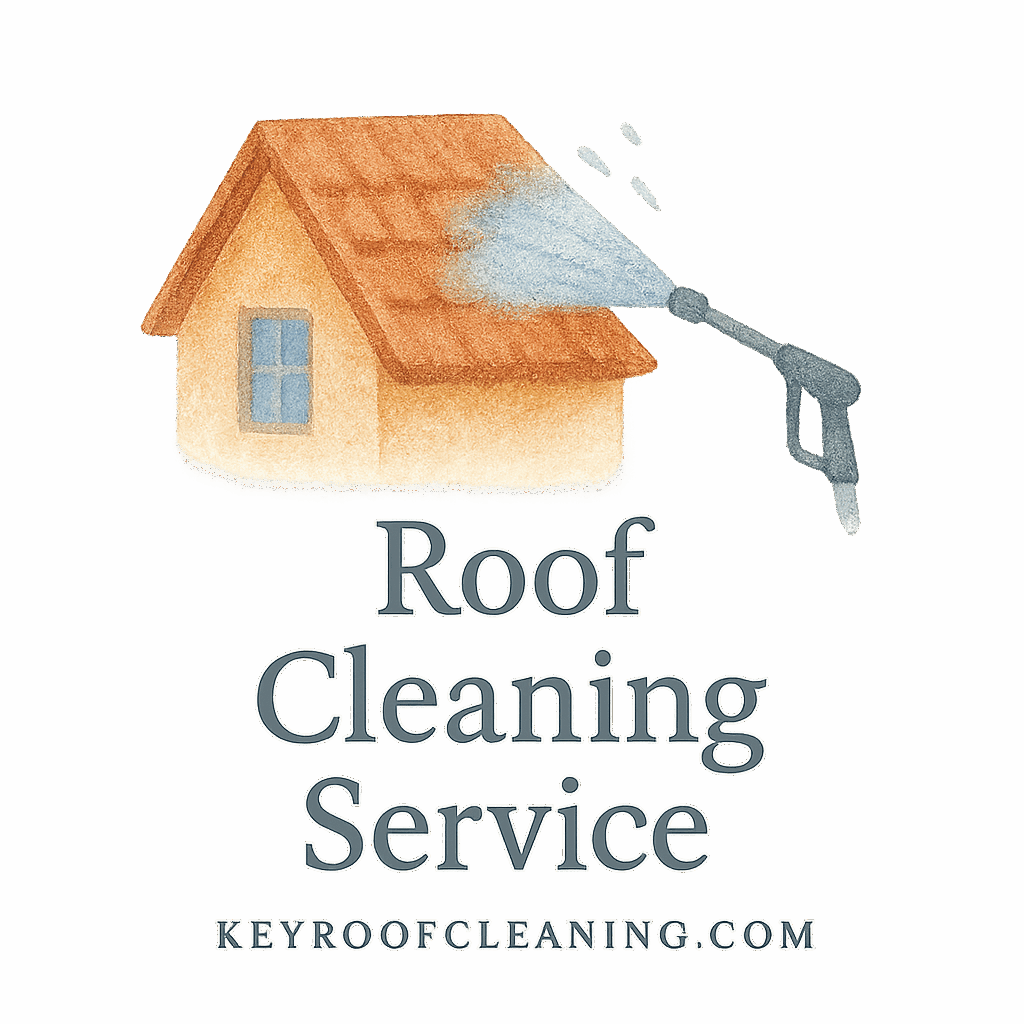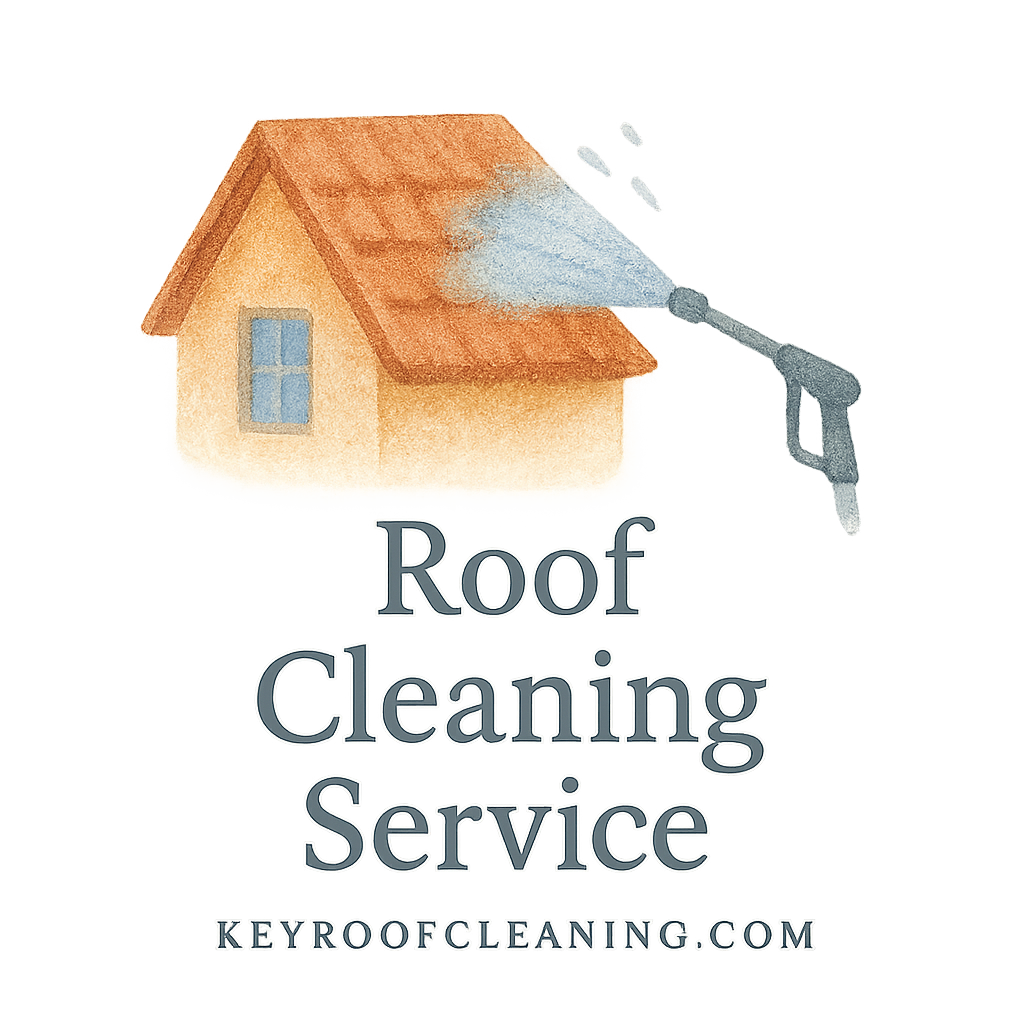Roof cleaning is essential for the longevity and aesthetics of your home—but pressure washing isn’t always the right approach. While it might seem like a fast and effective solution, there are plenty of situations where pressure washing for roof cleaning can do more harm than good.
In this guide, we’ll cover 6 critical times you should avoid pressure washing, explore better alternatives, and help you make informed decisions for your roof’s well-being.
Why Roof Cleaning Matters
Moss, algae, and dirt buildup aren’t just ugly—they can lead to long-term damage. A clean roof reflects sunlight better, improves insulation, and increases the lifespan of your materials. Check out the basics of roof cleaning to understand why it’s not something you should skip.
The Dangers of Pressure Washing for Roof Cleaning
Pressure Can Strip Away Protective Coatings
Roofs are designed with protective layers—coatings, granules, or sealants. A high-pressure stream can strip these away in seconds, reducing your roof’s ability to withstand the elements.
Risk of Water Damage to Roofing Layers
High-pressure water can force its way under shingles and tiles, leading to trapped moisture, mold growth, or even rotting wood beneath.
Potential Voiding of Roof Warranties
Most manufacturers specifically warn against using pressure washers on their roofing materials. Using one may void your warranty and leave you financially responsible for future repairs.
1. When You Have an Asphalt Shingle Roof
Shingle Granules Are Fragile
Asphalt shingles are one of the most common roofing types—and one of the most vulnerable to pressure washing. The granules protect against UV rays and weather. Pressure washing can blast these away, shortening your roof’s lifespan drastically.
Explore more about delicate roof types.
2. During Cold or Freezing Temperatures
Water Can Freeze and Cause Cracks
Even if the air feels “just cold,” water left in roof cracks can freeze overnight. That means expansion and contraction, which causes long-term cracking and damage. Plus, slippery surfaces are a major safety hazard.
Safety matters—so check out our guide on maintenance and safety before you even think about climbing up there.
3. If There Are Pre-Existing Roof Damages
Cracks and Leaks Can Worsen
If your roof already has signs of damage—like missing shingles, cracked tiles, or existing leaks—then pressure washing could push water deeper into these weak spots.
Take time to assess your roof type. Learn more at roof types and materials.

4. On Older or Historic Roofs
Materials Might Be Too Fragile
Older roofs often use clay, slate, or cedar materials that simply can’t handle high-pressure jets of water. You wouldn’t wash your grandma’s antique china with a firehose, right?
Use our roof cleaning checklist to see if your vintage roof is up to the task.
5. When Eco-Friendliness Is a Priority
Harsh Pressure Can Spread Contaminants
Pressure washing can dislodge moss and debris, but it doesn’t neutralize bacteria or algae. In fact, it often sends them straight into your gutters, lawn, and even local waterways—spreading contamination.
Switch to eco-friendly options and read about green methods to make your home a little kinder to the planet.
6. When You’re Not Professionally Trained
Lack of Experience Can Lead to Accidents
It’s easy to underestimate how dangerous roof work can be. Slippery surfaces, unstable ladders, and heavy equipment can spell disaster. If you’re not trained, it’s best to leave the job to pros.
Check out these hiring tips to find someone who knows what they’re doing.
Also, don’t miss our safety-focused tags on ladder safety, accident prevention, and OSHA guidelines.
Alternatives to Pressure Washing
Soft Washing: The Safer Option
Soft washing uses low-pressure water combined with cleaning solutions to break down grime. It’s safer for all roof types and highly effective.
Want to dig deeper? Visit roof cleaning techniques for an overview of soft wash vs. pressure wash.
Biodegradable Solutions for a Cleaner Roof
Using plant-safe, biodegradable cleaning agents is another great alternative. They remove algae without harming your roof or your garden below.
Look through our tools and products page for recommendations.
Importance of Hiring Professionals
Knowledge, Tools, and Safety
A professional cleaner isn’t just someone with a hose. They know how to identify problem areas, choose the right solution, and do it all safely.
Check out our trusted directory for professional service providers that specialize in sustainable, efficient roof cleaning.
Conclusion
To wrap it up: pressure washing isn’t always the answer. In fact, in the six cases we covered, it could spell serious trouble for your roof, your safety, and your budget.
Whether it’s due to material sensitivity, environmental impact, or your own safety, always consider the alternatives to pressure washing for roof cleaning. And when in doubt, go with a pro.
Visit Key Roof Cleaning for more expert tips, how-tos, and green cleaning methods that actually work.
FAQs
1. Is pressure washing ever safe for roofs?
Yes, but only for certain materials like metal or concrete tile—and even then, it should be done by a professional.
2. What’s the best alternative to pressure washing?
Soft washing with biodegradable cleaners is usually the safest and most effective alternative.
3. How often should I clean my roof?
Most roofs benefit from cleaning every 1–3 years, depending on location, climate, and material.
4. Can I clean my roof myself?
You can, but it’s risky. Always assess your comfort level and safety, and consider hiring a pro if you’re unsure.
5. What damage can pressure washing cause?
It can strip granules, crack shingles, create leaks, and void warranties.
6. Are there eco-friendly cleaning products available?
Absolutely! Check out our guides on eco-friendly and green living solutions.
7. Where can I find a trustworthy roof cleaning service?
Start with Key Roof Cleaning to find vetted professionals near you.


